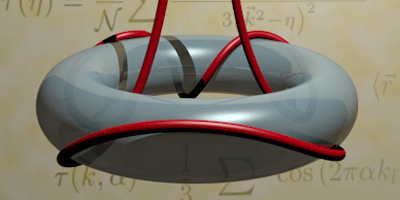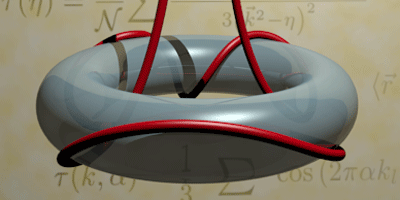Coming off the Grid
Lattice gauge theory is the art and science of simulating the dynamics of particles and fields on computers. Most lattice computations approximate continuous space and time by a lattice—or a grid—of a finite size. However, such computations often suffer from “finite volume effects,” where the results depend on the size of the grid. These effects need to be understood and separated out from the results of simulations before one can get meaningful physical answers for the continuum, infinite volume theory of interest.
Writing in Physical Review D, Shahin Bour at the University of Bonn, Germany, and collaborators show that the finite volume corrections to the energy of bound states moving in a finite periodic box have a universal character that is topological in origin, that is, they are independent of the details of the system’s geometry. These corrections contain information about the number and masses of the constituents of the bound state. Bour et al. also compute finite volume corrections to calculations of the scattering of bound states.
The authors verify their analytical results against numerical calculations using effective field theory models and find good agreement. Bour et al.’s results will be useful both for extrapolating lattice quantum chromodynamics calculations to the infinite volume limit, and studying few-body scattering in nuclear and cold atom systems. – Urs Heller and Abishek Agarwal





